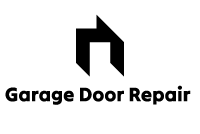Welcome, I’m Laura. Join me as we explore the diverse world of garage doors, ensuring you make an informed choice for your home. From roll-ups to sectionals, find your perfect fit!
Exploring Garage Door Varieties: Find the Perfect Match for Your Home Repair Needs
When it comes to garage door repair, understanding the different types of garage doors available can be crucial in finding the perfect match for your home. The type of door not only affects the aesthetic appeal but also has implications on durability, maintenance, and functionality.
Sectional Garage Doors are widely popular due to their convenience and safety features. Composed of panel sections connected with hinges, these doors rise vertically and slide into the garage’s ceiling space. They’re known for providing excellent thermal insulation if insulated, and come in a vast array of materials and styles, making them a versatile choice for homeowners.
Roll-Up Garage Doors, on the other hand, are designed to save space and are commonly found in commercial settings. For residential properties with limited ceiling space, a roll-up door can be an ideal solution. These require sturdy materials to withstand the rigors of rolling up and down frequently, which is a consideration when thinking about longevity and repairs.
Slide to the Side Garage Doors operate by bending to one side of the garage and sitting parallel to the wall. This variant is one of the earliest garage door designs and is perfect for garages with little headroom or ceiling space. While not as common as sectional doors, they are relatively easy to operate manually and have a straightforward repair process since they do not involve springs.
The Side-Hinged Garage Door is a traditional design that swings open and closed from a hinged frame on either side of the opening. They resemble large barn doors and are often made of wood, although more durable materials like steel are now available. These doors may be advantageous for those seeking a classic look or requiring minimal maintenance, as their operation is rudimentary compared to more complex mechanisms.
Lastly, Tilt-Up Canopy and Tilt-Up Retractable Garage Doors are single solid pieces that tilt up into the garage. The canopy version extends out from the garage providing some shelter, while the retractable version does not protrude, giving a cleaner look. However, these styles might require more frequent maintenance and repair due to the stress placed on the pivot points and springs.
Choosing the right garage door variety is vital for ensuring that future repairs are manageable, both in terms of cost and complexity. Therefore, when selecting a garage door or seeking a replacement, consider not only the design that fits your home’s aesthetic but also the practicality that aligns with your repair capabilities and willingness to maintain the system.
Frequent questions
What are the most common types of garage doors suitable for residential homes, and how do they differ in terms of repair needs?
The most common types of garage doors for residential homes include sectional, roll-up, slide to the side, and tilt-up canopy or tilt-up retractable.
Sectional doors are widely used due to their reliability and ease of automation, consisting of panel sections connected with hinges. They require regular maintenance on springs, rollers, and cables.
Roll-up doors are durable and good for limited space but can be more complex due to their heavy-duty design, needing checks on the roll and its related mechanisms.
Slide to the side doors operate by bending to one side of the garage and sitting parallel to the wall, requiring less overhead space and maintenance mainly on the tracks and rollers.
Tilt-up canopy and tilt-up retractable doors tilt out and up, forming a canopy or retracting fully. Their springs and pivot points may need more frequent repairs due to the movement and balancing required.
How does the type of garage door I choose impact the frequency and type of repairs it may require in the future?
The type of garage door you choose impacts future repair needs in terms of material durability, mechanical complexity, and environmental suitability. For instance, wood doors may require more maintenance for warping and rot, whereas steel doors might dent or rust. Additionally, intricate designs with more parts, like those in roll-up doors, may lead to more frequent mechanical issues. Choose a door that matches your climate and usage patterns to minimize repair frequency and cost.
Can the material of the garage door, such as wood, steel, or aluminum, affect the cost and complexity of repairs?
Yes, the material of the garage door can affect both the cost and complexity of repairs. Wooden doors may require refinishing or can be prone to warping, impacting repair methods. Steel doors are durable but can rust or dent, affecting repair costs. Aluminum doors are lightweight and less prone to rust, but repairs can be costly if the door is of a higher-end model. Each material has its considerations for repair processes and expenses.
In conclusion, understanding the various types of garage doors available for your home can greatly assist in making an informed decision that suits your needs, aesthetic preferences, and budget. Whether you choose the timeless appeal of traditional sectional doors, the modern touch of roller doors, or the efficiency and space-saving features of sliding or swing-out doors, each type comes with its own set of considerations for repair and maintenance.
Always remember that regular maintenance is crucial to extend the lifespan of your garage door, regardless of the type. Should you encounter any issues, it’s essential to seek professional garage door repair services to ensure safety and restore functionality. By staying informed and attentive to the needs of your garage door, you can enjoy the convenience and security it provides for many years to come.
